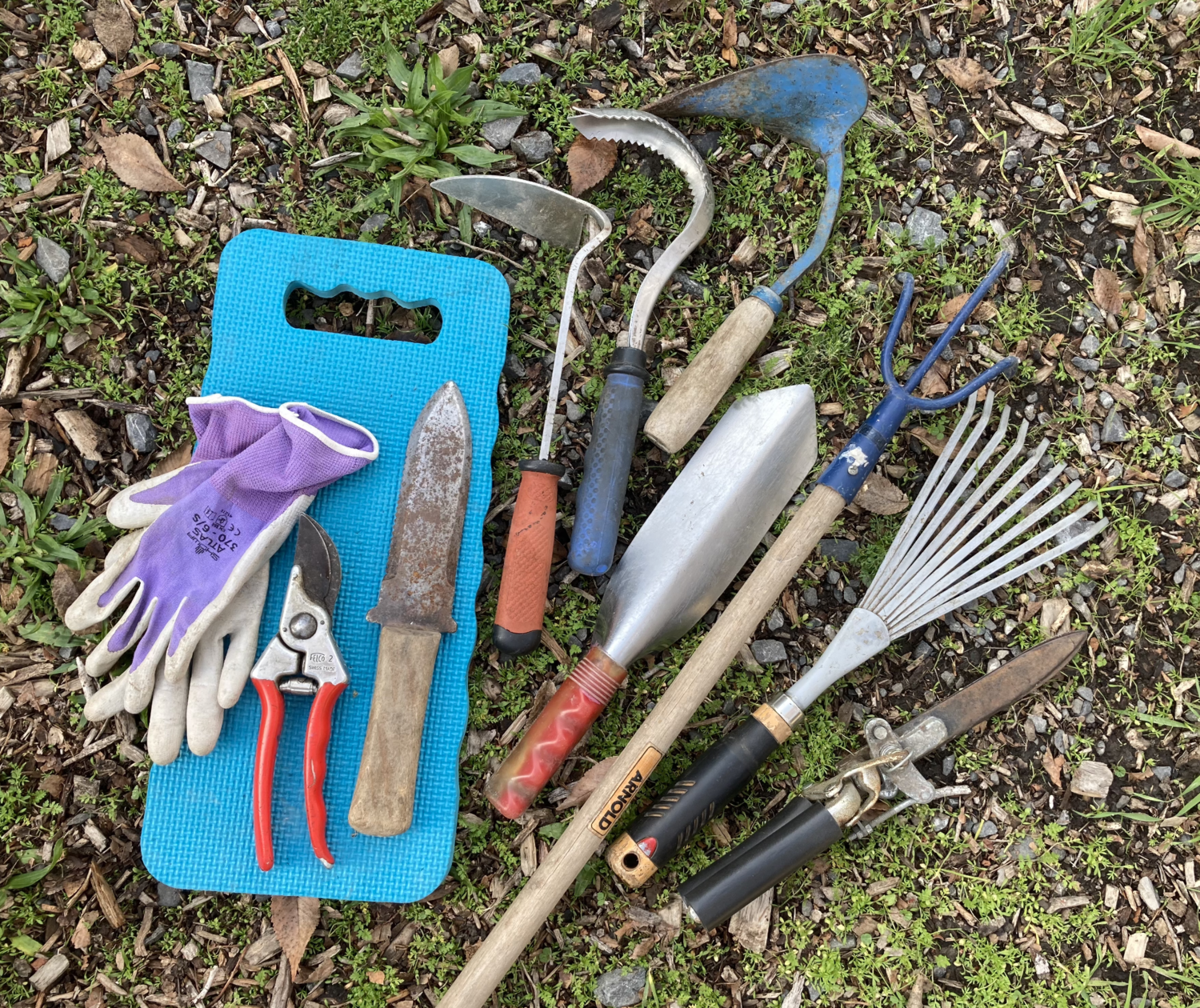Gardening 101: A Step-By-Step Guide for beginner gardeners
No need to dig around on Google for the answers to your gardening or pest questions. Get growing sustainably from the start with this simple guide for beginner gardeners, cultivated by a professional gardener.
STEP 1
Before you choose your plants or move dirt, study your garden’s environment. You want to understand the light exposure, wind details, soil type, and landscape grade.
Questions to ask yourself:
Does this part of the garden get full sun all day, shade in the morning and sun in the afternoon, or no direct sunlight at all? How windy does it get? Is there a wind channel that picks up in the late afternoon each day? How fast does the water soak into the soil and how soon does it dry out? Is the area on a slope?
STEP 2
Consider how to protect your plants from larger critters like gophers, moles, and voles. If you want to avoid frustration in the long run, plant in gopher baskets, raised beds lined with gopher wire, or pots above ground.
Questions to ask yourself:
Am I planting in the ground or in pots? Do I have gophers or voles that will eat the roots of my plants?
STEP 3
Do your homework to find plants that will thrive within the environment you have. Whether that’s an outdoor vegetable patch or a windowsill herb garden, work with what you have available to see the best results!
Questions to ask yourself:
What types of plants do I want to grow – food and/or flowers? What are their sunlight, climate, water, and soil needs? Does this align with my garden’s conditions?
STEP 4
Amend the soil with quality compost. Soil is the foundation for your garden, so you want to set a good one. The healthier the soil, the happier and healthier your plants will be!
STEP 5
Plant correctly. This includes making sure the plant thrives and has its needs met in the location you choose for it. Believe it or not, there’s a right and wrong way to plant, which can be confusing for beginners.
Questions to ask yourself:
Does my garden area meet the plant’s requirements? Will the plant outgrow the space provided? Is the hole the right depth and width for the plant? Is the root ball loosened? Is the plant centered in the hole and level with the soil? Does the plant need fertilizer or mulch?
STEP 6
Water your plant’s root zone deeply and allow the soil to dry out fully. This encourages the root zone to grow deeply and wide. Increase the volume and reduce the frequency of your watering as your plants mature.
Questions to ask yourself:
Is the soil fully saturated or is the water running off? Am I allowing the soil the dry out completely between waterings? Is it too hot to water? Is my plant dying or just conserving moisture?
*Water is LIfe art work by Soni López-Chávez (@soni_artist)
STEP 7
Any plant that produces food will need their own food. Feed with organic fertilizers according to the plant’s needs. Also, flowers like roses and dahlias love fertilizer since it helps them grow magnificent flowers!
Questions to ask yourself:
Which type of fertilizer is better: organic or synthetic? How often does each plant in my garden need fertilizer?
STEP 8
Provide seasonal pruning to perennials, roses, deciduous fruit trees, and others.
STEP 9
Don’t panic when pests arrive! They’re to be expected. Properly identify the pest, address the cause, and then monitor.
Questions to ask yourself:
Why is this happening and can I live with it? Is my garden getting the nutrients it needs? Are these pests or beneficial pollinators?
STEP 10
Relax and enjoy. You worked hard, now it’s time to reap what you sowed.










